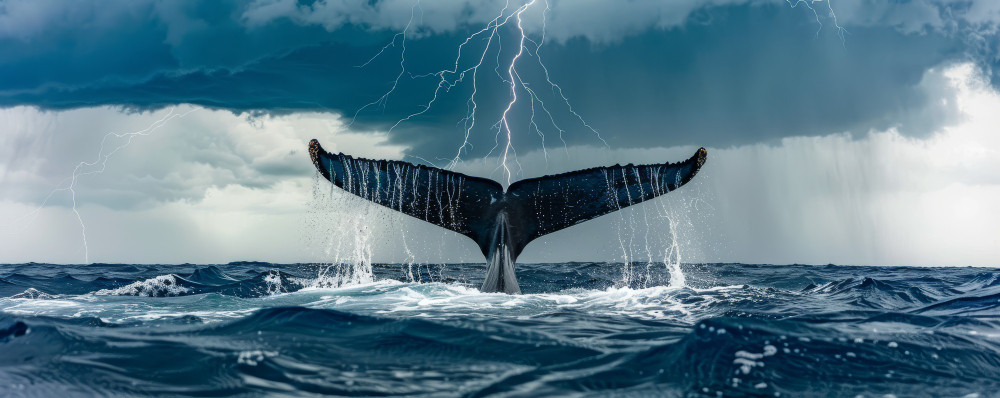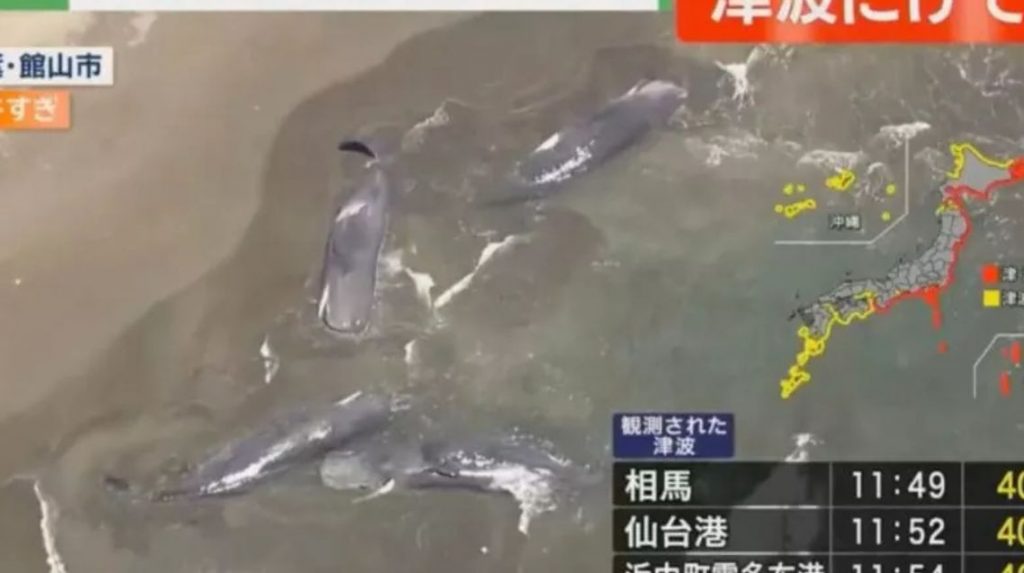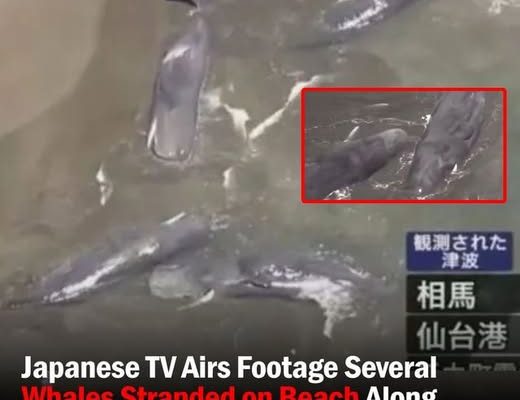
On July 30, 2025, a powerful event shook the Pacific, leaving people stunned and nature in chaos.
A massive earthquake struck off Russia’s Kamchatka Peninsula, triggering a tsunami that reached Japan’s shores.
Hours later, a heartbreaking scene unfolded: several whales were found stranded along Japan’s coast.
What caused this disaster, and how did it affect the marine life and people in the region? Let’s explore this extraordinary event.
Earthquake and Tsunami Strike the Pacific
A powerful 8.8-magnitude earthquake hit near Russia’s Kamchatka Peninsula on July 30, 2025. It was one of the strongest earthquakes recorded in decades, centered about 126 kilometers from Petropavlovsk-Kamchatsky at a shallow depth of 18 kilometers.
This caused tsunami waves to surge across the Pacific, reaching Japan’s northern island of Hokkaido and other coastal areas. The Japan Meteorological Agency reported waves up to 50 centimeters high at Ishinomaki port in Miyagi Prefecture, with smaller waves of 30 to 40 centimeters hitting 16 other locations along the Pacific coast. Warnings were issued for Japan, Hawaii, Alaska, and other Pacific regions, urging people to evacuate to higher ground.
The tsunami’s force was not limited to Japan. In Russia’s Kuril Islands, waves as high as 4 meters caused flooding and damaged ports. The Sakhalin region declared a state of emergency, and coastal towns like Severo-Kurilsk saw buildings submerged. The event reminded many of the devastating 2011 Japan earthquake and tsunami, which caused widespread destruction. This time, no major injuries were reported, but the impact on nature was clear.
Whales Stranded on Japan’s Shores

As the tsunami waves reached Japan, a tragic sight appeared on the beaches of Tateyama in Chiba Prefecture. At least four whales, identified as sperm whales in some reports, were found stranded, lying helplessly on the shore.
Videos broadcast on Japanese television showed the massive creatures struggling as waves crashed around them. In Kamchatka, five beluga whales were also washed ashore, with local residents attempting to save them by pouring water over their bodies.
Why do whales strand during tsunamis? When tsunami waves approach the shore, the water often pulls back strongly before rushing in. This sudden change in water levels and currents can confuse marine animals like whales, causing them to beach themselves.
While whales are usually safe in deep ocean waters, the shallow coastal areas become dangerous during such events. Despite efforts to rescue the animals, many did not survive, leaving communities heartbroken.
Impact and Response

The stranding of whales sparked concern across Japan and beyond. In Japan, nearly two million people were evacuated from coastal areas to avoid the tsunami’s threat. Train services were halted, and airports like Sendai suspended operations.
In Hawaii, tsunami warnings caused traffic jams as people fled to higher ground. The Fukushima nuclear power plant was evacuated as a precaution, but no damage to nuclear facilities was reported.
Social media captured the chaos, with videos showing waves crashing into Russian ports and whales stranded on Japanese beaches. Some posts falsely claimed the whale strandings predicted the earthquake, but experts, like those from the National Museum of Nature and Science, have found no evidence linking strandings to earthquake prediction. Instead, the strandings were a direct result of the tsunami’s powerful currents.
Rescue efforts in Kamchatka showed the human side of the disaster, with locals trying to save the beluga whales. In Japan, authorities focused on keeping people safe while monitoring the waves.
The event highlighted the power of nature and its impact on both humans and animals. As the Pacific region recovers, the stranded whales serve as a reminder of the ocean’s strength and fragility.

